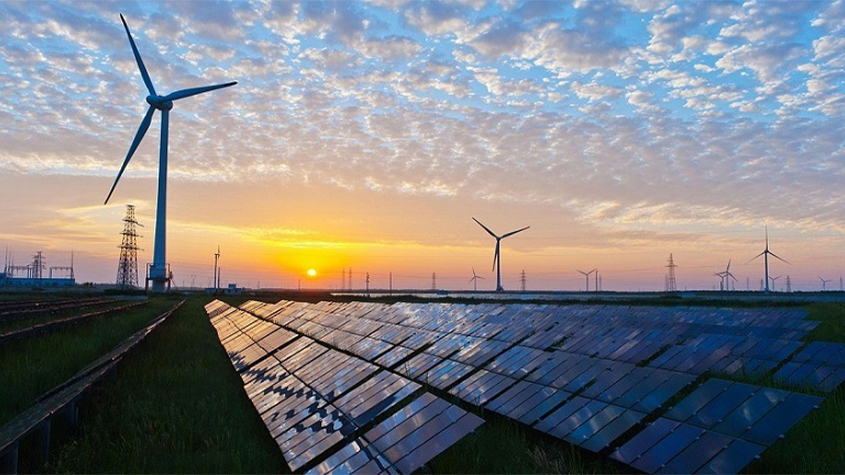
by Vinergy Vietnam | Aug 22, 2024 | Uncategorized
How investing in Renewable Energy is becoming a crucial trend for pioneering businesses in Vietnam but still faces many challenges, especially in terms of financing. This article will provide an overview of effective investment methods in renewable energy, helping Vietnamese businesses seize opportunities and overcome barriers in this potential-filled sector.
Current State of Renewable Energy in Vietnam
Vietnam’s renewable energy landscape is experiencing explosive growth, driven by forward-thinking policies and abundant natural resources. Solar and wind power are leading this green revolution, with investment and installation rates soaring to unprecedented levels.
As of 2021, renewables constituted an impressive 56% of Vietnam’s power grid. The country’s sustainable energy capacity expanded significantly, reaching 39 GW in 2020. Hydro and marine energy dominate, comprising 51% of total capacity, closely followed by solar at 39%. Wind energy demonstrated remarkable potential, growing 6.5 times from 2020 to 2021. Vietnam’s rapid economic growth, averaging 6.3% annually in the 2010s despite global challenges, has fueled surging energy demand. Vietnam Electricity (EVN) reported consumption rising from 128.6 TWh in 2014 to 209.4 TWh in 2019. With energy demand expanding over 11% yearly, outpacing GDP growth, substantial investments are crucial.
The government has set ambitious targets, aiming for renewables to play a significant role in national power production. The draft Power Development Planning (PDP) 8 projects solar and wind capacities to reach 18.6 GW and 18.0 GW respectively 2030, up from 16.6 GW and 0.6 GW in 2020. At COP26 in 2021, Vietnam announced bold net-zero targets, including a 43.5% emissions reduction in 2030. The revised Master Power Development Plan VIII (PDP8) aims for renewable sources to deliver 31.5% of electricity produced in 2030 and 36.3% in 2045. EVN reported that wind and solar energy accounted for 27% of Vietnam’s 76,620 MW power generation capacity at the end of 2021.
However, challenges remain. Thermal coal-fired power plants will still contribute significantly, generating 30% of the supply in 2030. McKinsey & Company warns that without technological advancements, emissions could quadruple in 2050 if industries continue growing at the current rate.
Despite these hurdles, Vietnam’s commitment to renewable energy is clear. In 2022, the country ranked among the world’s top ten solar energy producers, signaling its growing influence in the global renewable energy market.

Why Should Vietnam’s Enterprises Invest in Renewable Energy?
As Vietnam continues to develop rapidly, the shift towards renewable energy presents a wealth of opportunities for forward-thinking businesses. Here are four compelling reasons why Vietnamese companies should consider investing in this burgeoning sector:
1. Ethical impact
Investing in renewable energy allows Vietnamese businesses to make a significant ethical impact and contribute to a greener future. With climate change being a global hot-button issue, switching to clean energy significantly reduces carbon emissions. Plus, it boosts brand reputation, attracting environmentally conscious customers and partners. It’s a win-win for your business and the planet.
2. Tech revolution
Secondly, renewable energy is at the forefront of technological innovation. From high-efficiency solar panels to cutting-edge energy storage solutions, this field is constantly leaping forward. Vietnamese businesses that invest early get a front-row seat to the latest tech, potentially giving them a competitive edge in the future.
3. Governmental support
The Vietnamese government is throwing its full weight behind renewable energy, creating a golden opportunity for investment. Vietnam has set an ambitious target of sourcing 70% of its electricity consumption from sustainable sources by 2050 at the UNFCCC, in line with its commitment to carbon neutrality. To achieve this, the government has rolled out a series of enticing incentives. For instance, corporations investing in renewable energy projects can enjoy a preferential Corporate Income Tax (CIT) rate of just 10% for 15 years, compared to the standard 20%. This rate can even be extended up to 30 years in special cases.
Additionally, businesses can benefit from import tax exemptions on materials for renewable energy infrastructure, and land rent exemptions ranging from 3 to 15 years, depending on the project location. With such robust governmental backing, the renewable energy sector in Vietnam is primed for explosive growth, offering businesses a chance to align with national priorities while potentially reaping significant long-term benefits.
4. Economic boost
Lastly, investing in renewable energy can provide a significant economic boost for Vietnamese businesses and communities. The sector creates numerous job opportunities, particularly in rural areas where many renewable energy projects are located. Additionally, increased reliance on locally produced clean energy reduces dependence on fuel imports, strengthening energy security and potentially stabilizing energy costs for businesses in the long run.
Types of Renewable Energy Sources in Vietnam
1. Solar Power
Vietnam boasts immense potential for solar energy development in Southeast Asia. With over 2,500 hours of annual sunshine, the country could achieve 85 GW of solar capacity by 2030 and a staggering 214 GW by 2050, according to World Bank projections. The central and southern regions, blessed with abundant sunshine, are prime locations for solar projects. Vietnam’s vast tracts of vacant land provide ideal conditions for constructing solar power plants. Government incentives further bolster the attractiveness of investing in this rapidly growing sector.
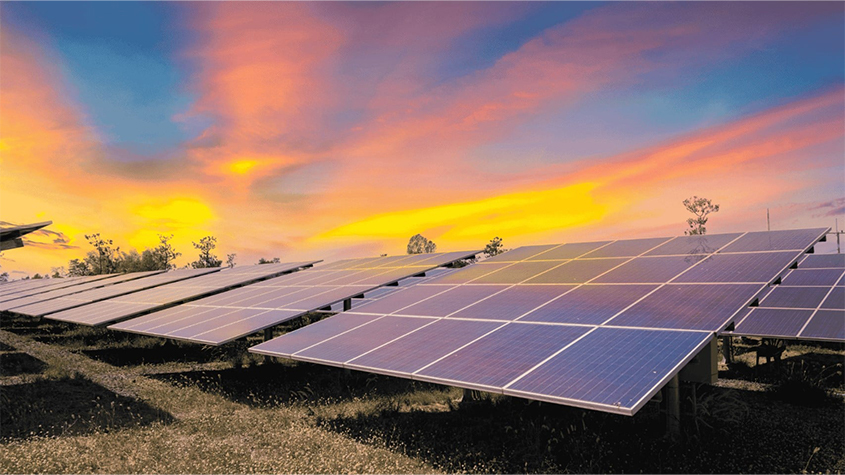
2. Hydropower
Steep mountainous terrain, numerous rivers, and plentiful rainfall create optimal conditions for hydropower development in Vietnam. Hydropower is Vietnam’s largest renewable energy source, boasting an installed capacity exceeding 23 GW as of November 2023. This accounts for over 40% of the country’s total power capacity. Notable installations include the Hoa Binh, Son La, Lai Chau, and Yaly power plants. Beyond clean energy production, hydroelectric projects play crucial roles in flood and drought regulation while fostering tourism development in various regions.
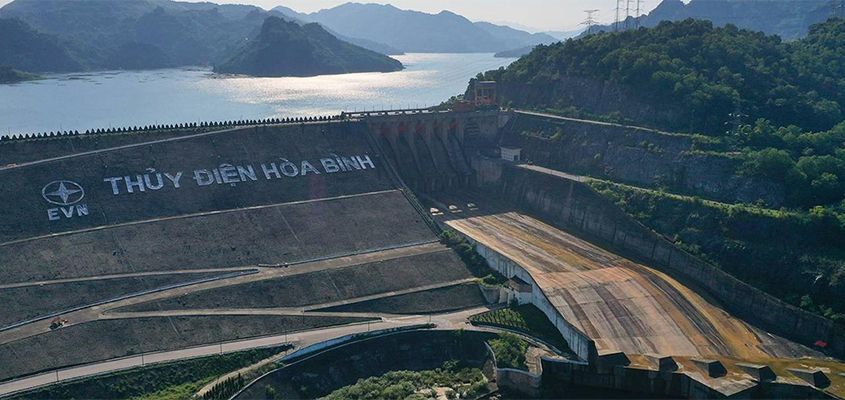
3. Wind Power
Vietnam’s 3,200 km coastline and windy coastal areas present significant opportunities for wind power development. The wind power industry has experienced remarkable growth, with total installed capacity surpassing 7 GW as of November 2023—a tenfold increase from 2020. Several large-scale offshore wind projects are currently under development, including the 4 GW La Gan project, the 3.5 GW Mui Dinh project, and the 2 GW Thang Long project.
Despite this progress, Vietnam’s wind potential remains largely untapped. While government policies support wind energy expansion, challenges such as high investment costs and the need for technical expertise persist. These initiatives and challenges underscore the evolving importance of wind power in Vietnam’s renewable energy landscape.
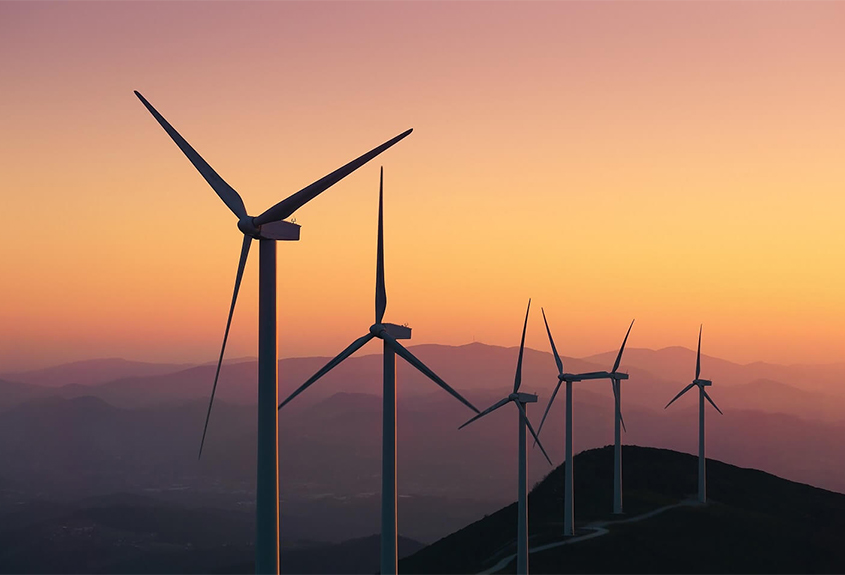
4. Biomass Energy
Vietnam’s thriving agricultural sector provides ample organic waste for biomass energy production. This renewable source offers dual benefits: effective waste management and power generation. Facilities across the country convert crop residues like rice husks and bagasse into valuable energy sources. Biomass energy not only contributes to electricity production but also supports rural development and aids in reducing greenhouse gas emissions, aligning with global environmental objectives.

Is Renewable Energy a Good Investment?
Vietnam’s long coastline and Mekong Delta location render Vietnam highly susceptible to climate change impacts, despite a mere 0.8% contribution to global greenhouse gas emissions. Severe flooding risks and increasing typhoon exposure threaten Vietnamese livelihoods, infrastructure, and food security. Recognizing these challenges, Vietnam has expanded its climate commitments. At COP28 in December 2023, the country joined the “Global Cooling Pledge,” aiming to reduce greenhouse gas emissions from the cooling industry by at least 68% come 2050.
Achieving these ambitious goals demands substantial investment in renewable energy and innovative technologies harnessing carbon-neutral power sources. Without continued financial backing, reaching these targets remains challenging.
Renewable energy plays a crucial role in Vietnam’s future development. Far from a passing trend, renewable energy forms a critical component of Vietnam’s sustainable growth strategy. While investors still view renewables as a niche sector, compelling opportunities abound.
No investment comes without risk, yet energy’s future must prioritize sustainability. This reality positions renewable energy as both a savvy and ethical investment choice for forward-thinking Vietnamese businesses. As Vietnam strives to meet climate commitments and secure energy needs, investing in renewable technologies offers potential financial returns while bolstering Vietnam’s climate change resilience.
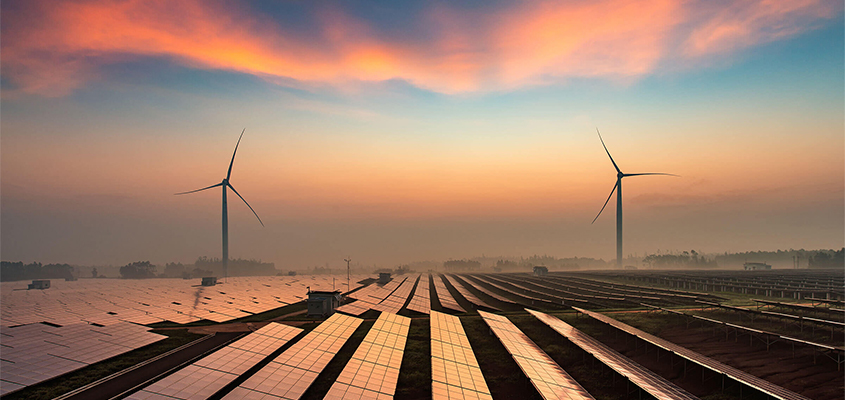
How to Invest in Renewable Energy?
Investing in renewable energy presents numerous opportunities for forward-thinking Vietnamese businesses. The simplest approach is purchasing stocks in listed renewable energy companies. However, many promising enterprises in this sector are not yet publicly traded, requiring substantial capital for participation. A suitable option for individual investors is renewable energy funds, which provide access to high-value investments and support green energy development. These funds are typically professionally managed, optimizing profit potential.
Businesses can also consider direct investment in renewable energy projects, such as installing solar energy systems for production facilities or participating in wind energy development projects. Thorough research and consultation with industry experts are essential for making appropriate investment decisions, while considering factors such as risk, expected returns, and environmental impact. Companies might explore partnerships with established renewable energy firms or invest in research and development of innovative clean technologies. Additionally, implementing energy-efficient practices within their own operations can serve as a form of indirect investment, reducing long-term costs and demonstrating commitment to sustainability.
If you have any questions about Renewable Energy or energy monitoring and saving solutions of Vinergy, don’t hesitate to contact us today!
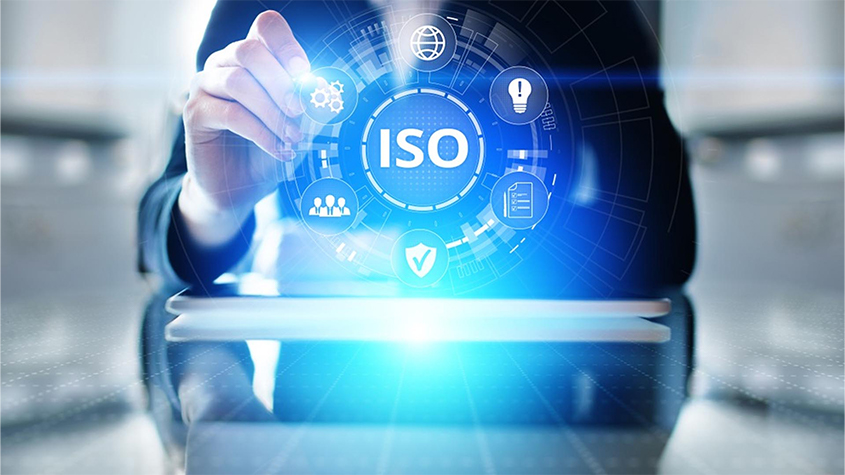
by Vinergy Vietnam | Aug 20, 2024 | Uncategorized
For Vietnamese businesses seeking to enhance energy efficiency and reduce costs, the question “What is ISO 50001 certification?” has become increasingly relevant. ISO 50001 is an internationally recognized standard that provides a framework for organizations to develop effective energy management systems. As global energy consumption rises, this certification offers Vietnamese companies a powerful tool to optimize energy use and improve sustainability. Let’s explore how ISO 50001 can give your business a competitive edge in the market.
What is ISO 50001 Certification?
ISO 50001 is a voluntary international standard issued by the International Organization for Standardization (ISO). This certification is awarded when a company demonstrates an effective energy management system. ISO 50001 provides a framework for establishing, implementing, and maintaining an efficient energy management system.
This standard is geared towards businesses committed to disclosing and reducing their emissions, while focusing on developing policies to enhance energy efficiency in their operations. ISO 50001 assists facilities in evaluating and prioritizing the implementation of new energy-efficient technologies, improving energy efficiency, use, and consumption. It also creates transparency and facilitates communication on the management of energy resources.
An energy management system under ISO 50001 is a framework for implementing technical and management strategies that significantly reduce energy costs and greenhouse gas emissions over time. System components include creating an energy policy, setting objectives for improving energy efficiency, establishing a timeline with target dates to meet objectives, and developing a specific action plan.
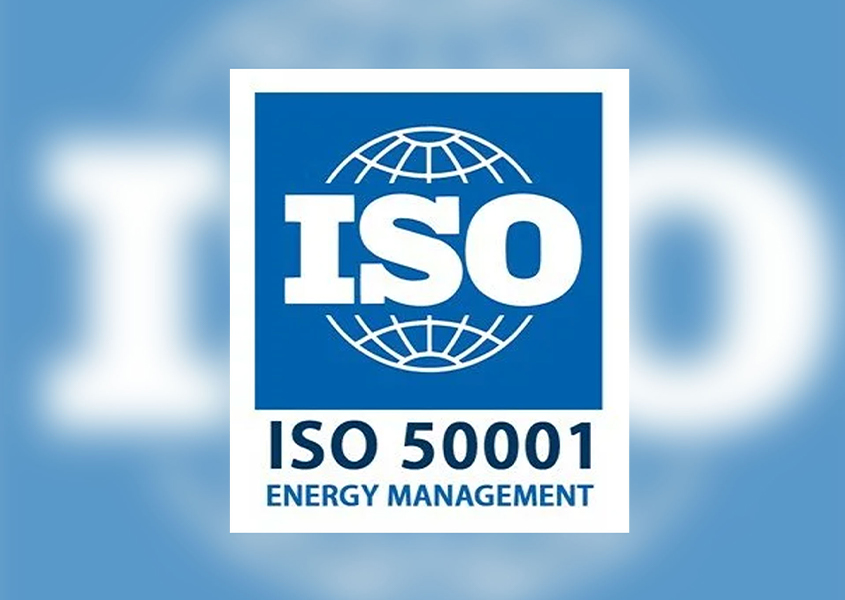
How is an ISO 50001 different from an ISO 9001 or an ISO 14001?
While all ISO certifications aim to benefit companies in the long run by establishing more productive systems, each focuses on a distinct management area:
- ISO 9001 centers on Quality Management Systems (QMS). A QMS documents policies and procedures essential for ensuring customer satisfaction through the delivery of high-quality products and services.
- ISO 14001 focuses on Environmental Management Systems, which assist companies in achieving their environmental goals through continuous monitoring and adjustment of current environmental objectives, encompassing resource use, waste management and pollution.
- ISO 50001 specifically targets Energy Management Systems (EMS). An EMS helps organizations optimize their energy use, reduce costs, and minimize environmental impact through systematic energy management.
ISO 50001 differs from ISO 9001 and ISO 14001 in its dedicated emphasis on energy performance and efficiency. While ISO 14001 broadly addresses environmental concerns, ISO 50001 zeroes in on energy-related aspects, providing a framework for organizations. All three management systems – Quality, Environmental, and Energy – are crucial for ensuring smooth business operations while also addressing the pressing need for emissions reduction in the face of global climate change.
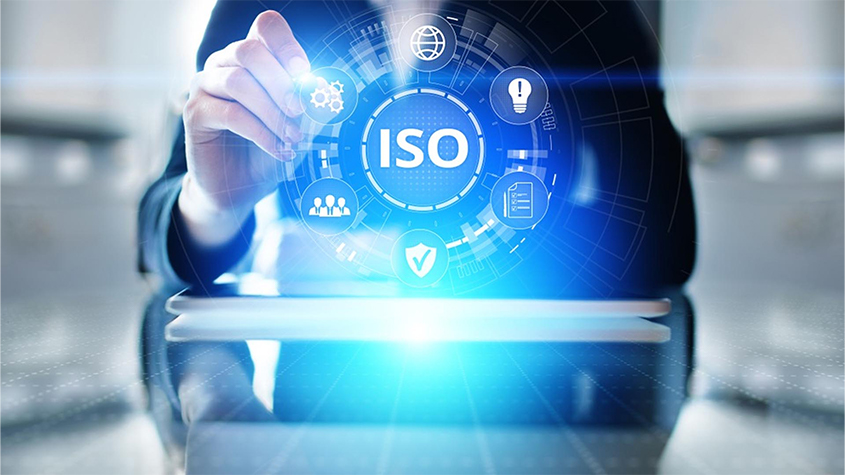
Benefits of ISO 50001 for Vietnamese Businesses
At a recent workshop focusing on the ISO 50001 Energy Management System, Nguyen Kinh Luan, a consultant from the Energy Saving Office of the Ministry of Industry and Trade (MOIT), highlighted the significant advantages of implementing energy management systems. He emphasized that such systems would enable businesses to cut down on energy expenses, contribute to environmental conservation, and bolster national energy security. Specifically, ISO 50001 offers the following outstanding benefits, including:
1. Reduce manufacturing costs
ISO 50001 helps businesses identify and eliminate energy waste in their production processes. Through the implementation of effective energy-saving measures, companies can significantly reduce operational costs. This system also supports energy demand planning and forecasting, optimizing energy procurement and usage. As a result, businesses can cut production costs, increase profits, and improve their market competitiveness. The systematic approach to energy management ensures long-term cost savings and financial stability for Vietnamese enterprises.
2. Improve operational efficiency
ISO 50001 drives continuous improvement in energy management, optimizing processes across the organization. It guides businesses to identify energy performance opportunities and set specific targets. Regular monitoring enables quick issue detection and resolution. This systematic approach not only enhances energy use efficiency but also boosts overall productivity and product quality. By streamlining operations and making data-driven energy decisions, companies can reduce downtime, allocate resources more effectively, and align energy management with organizational goals. The result is a more efficient operation that produces higher quality products while consuming less energy.
3. Minimize environmental impact
Through effective energy management, businesses can significantly reduce their carbon emissions and other negative environmental impacts. ISO 50001 encourages the use of renewable energy sources and energy-efficient technologies. This not only helps companies comply with environmental regulations but also contributes to global climate change mitigation efforts. Businesses implementing ISO 50001 can take pride in positively contributing to the country’s sustainable development. Moreover, this commitment to environmental stewardship can open doors to green markets and environmentally conscious consumers.

4. Enhance brand reputation
ISO 50001 certification demonstrates a company’s strong commitment to sustainable development and environmental protection. This creates a positive image in the eyes of customers, partners, and the community. Businesses can use this certification as an effective marketing tool, attracting environmentally conscious customers and partners. The improved reputation can also lead to new business opportunities and market expansion, especially in sectors with high environmental responsibility demands. Furthermore, it can enhance employee morale and attract top talent who value working for environmentally responsible organizations.
5. Increase competitiveness
Businesses applying ISO 50001 gain a competitive edge in the market, especially as more organizations and customers prioritize environmentally conscious business partners. This certification can open up opportunities to participate in global supply chains where energy management standards are increasingly important. Companies may also gain easier access to green capital and government support programs for sustainable businesses.
Additionally, optimizing energy use helps businesses become more flexible in dealing with energy price fluctuations, enhancing their resilience in a challenging business environment. The improved efficiency and reduced costs associated with ISO 50001 allow Vietnamese businesses to offer more competitive pricing without compromising on quality or profitability.
Success Stories from Vietnamese Businesses
The implementation of ISO 50001 has proven to be a wise decision for Vietnamese businesses aiming for sustainable development. Several pioneering companies have successfully adopted this smart energy management system, reaping significant benefits. Here are some notable success stories:
1. Vinamilk Group
Vinamilk Group, a leader in the dairy industry, was among the first Vietnamese enterprises to implement ISO 50001 in 2012. This forward-thinking approach has yielded impressive results, with the company achieving annual energy consumption savings exceeding 10%. Vinamilk’s commitment to energy efficiency did not go unnoticed, as they received the prestigious “Efficient Energy Enterprise” award from the Ministry of Industry and Trade in 2014. This recognition underscores the tangible benefits of ISO 50001 implementation and Vinamilk’s role as a trailblazer in sustainable business practices.
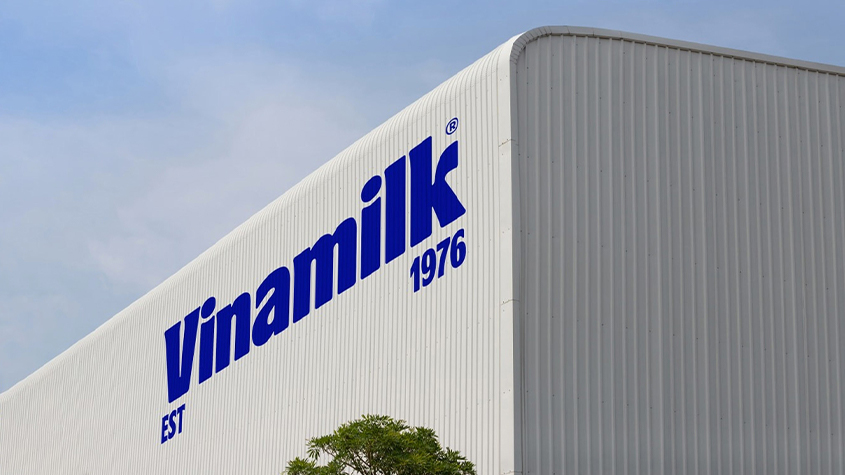
2. Vinacafe Bien Hoa Joint Stock Company
Vinacafe Bien Hoa Joint Stock Company, Vietnam’s largest coffee producer, embraced ISO 50001 in 2013. The adoption of this energy management system has led to substantial improvements in their operations. Each year, the company has managed to reduce its energy consumption by more than 5%. This significant reduction not only contributes to cost savings but also aligns with the company’s commitment to environmental stewardship, setting a positive example for other players in the coffee industry.
3. Saigon Beer – Alcohol – Beverage Corporation (Sabeco)
Saigon Beer – Alcohol – Beverage Corporation (Sabeco), Vietnam’s leading beer manufacturer, implemented ISO 50001 in 2015. The results have been remarkable, with the company achieving annual energy savings surpassing 6%. This substantial reduction in energy consumption has not only improved Sabeco’s operational efficiency but also strengthened its position as a responsible corporate citizen. The success of Sabeco in implementing ISO 50001 demonstrates the standard’s applicability and benefits in the beverage industry.
4. Hoa Phat Group
Hoa Phat Group, one of Vietnam’s largest steel corporations, adopted ISO 50001 in 2016. Despite the energy-intensive nature of steel production, the company has managed to reduce its energy consumption by more than 4% annually through the implementation of this standard. This achievement is particularly noteworthy given the scale of Hoa Phat’s operations and the challenges inherent in the steel industry. The group’s success story serves as an inspiration for other heavy industry players considering ISO 50001 adoption.

How can Businesses get ISO 50001 certified?
While ISO 50001 certification is not mandatory, it can significantly contribute to the future success of your company. The process of obtaining ISO 50001 certification involves several key steps:
- Gain a thorough understanding of ISO 50001: Businesses should first familiarize themselves with the standard. Consider enrolling in training classes to ensure comprehensive knowledge of ISO 50001 requirements.
- Identify areas for improvement: Evaluate your current energy management practices and pinpoint aspects that need enhancement to align with ISO 50001 standards.
- Develop an energy management plan: Create a new, comprehensive energy management plan that meets ISO 50001 requirements. This plan should be approved by the company’s leadership.
- Document the energy management system: Thoroughly document all aspects of your new energy management plan. This documentation is crucial for the certification process.
- Implement the new Energy Management System (EMS): Put your newly developed EMS into practice across all relevant areas of your organization.
- Conduct an internal audit: Perform a thorough internal audit to ensure that your EMS is functioning as intended and meets all ISO 50001 requirements.
- Apply for certification: Once the above steps are completed and you’re confident in your EMS, you can officially apply for ISO 50001 certification.
While obtaining ISO 50001 certification is not inherently difficult, it does require dedication and time. Companies must commit not only to the steps required to establish an Energy Management System but also to maintaining and improving the EMS over time.
The good news is that once acquired, an ISO 50001 certification is valid for three years. This provides a substantial period during which your company can reap the benefits of improved energy management and demonstrate its commitment to sustainability. If you have any questions about ESCOs or energy monitoring and saving solutions of Vinergy, don’t hesitate to contact us today!

by Vinergy Vietnam | Aug 4, 2024 | Uncategorized
As Vietnam’s economy continues to grow rapidly, businesses are increasingly seeking ways to optimize their energy consumption and reduce costs. One innovative solution gaining traction is the Energy Service Company (ESCO) model. But what is an Energy Service Company, and how can it benefit businesses in Vietnam? This article explores the concept of ESCOs, delves into the numerous advantages they offer to companies looking to enhance their energy efficiency and sustainability practices in the Vietnamese market, and provides guidance on how to start working with an ESCO.
What is an Energy Service Company (ESCO)?
An Energy Service Company, commonly known as ESCO, is a specialized business that offers comprehensive energy solutions to organizations seeking to improve their energy efficiency, reduce costs, and minimize environmental impact. The primary goal of an ESCO is to help clients achieve significant energy savings through customized solutions tailored to their specific needs. These companies typically operate under a performance-based contracting model, where their compensation is directly linked to the actual energy savings achieved for the client.
The ESCO model serves a broader purpose beyond individual client benefits. It aims to promote energy conservation, cost reduction, and environmental protection on a larger scale. As a result, there has been a growing trend to encourage the adoption of the ESCO model, recognizing its contribution to sustainable development and environmental stewardship.
ESCOs provide a wide range of services, encompassing roles from assessors to project managers. Their services typically include:
- Energy assessments and audits: ESCOs conduct thorough analyses of a client’s energy usage patterns and identify areas for potential improvement.
- Energy efficiency recommendations: Based on their assessments, ESCOs suggest tailored measures to enable energy savings.
- Design and implementation of energy-saving projects: They develop and manage the implementation of customized solutions to enhance energy efficiency.
- Installation and maintenance of energy-efficient equipment: ESCOs often handle the entire process from equipment selection to installation and ongoing maintenance.
- Monitoring and evaluation of savings: They use sophisticated tools and methodologies to measure and verify the actual energy savings achieved through their interventions.
- Ongoing support and optimization: They continue to work with clients post-implementation to fine-tune systems and maximize energy savings.

Overview of Vietnam’s ESCO Market
ESCOs play a crucial role in Vietnam’s pursuit of energy efficiency. They are integral to achieving the objectives of the Vietnam National Energy Efficiency Programme, which aims to reduce energy consumption 5 – 7% from 2019 – 2025 and 8 – 10% from 2019 – 2030. ESCO projects have demonstrated significant potential in enhancing energy efficiency across various sectors.
However, the ESCO market in Vietnam faces numerous challenges. The legal and regulatory frameworks are often inadequate, and there is a lack of financial support mechanisms for developing and implementing energy-saving projects. Furthermore, only a limited number of funds and financial institutions participate in ESCO activities, restricting the growth of this sector.
Another significant hurdle is the lack of trust from potential customers. Businesses’ reluctance to enter binding agreements complicates matters, creating high risks for ESCO operations. This hesitation stems from a combination of unfamiliarity with the ESCO model and concerns about long-term commitments. Currently, Vietnam has approximately 50 ESCOs, but most lack the financial capabilities to sustain their operations and grow. It needs to establish a robust legal foundation for ESCOs and provide essential financial support, according to VIR.
To address these challenges, initiatives like the EVEF, a joint technical cooperation project co-financed the EU and the German Federal Ministry for Economic Cooperation and Development (BMZ), are working closely with Vietnam’s Ministry of Industry and Trade. Their goal is to enhance governance in the energy sector, facilitating a shift towards more sustainable energy development in Vietnam. Such efforts are crucial for implementing the regulatory framework needed to achieve Vietnam’s commitments to reduce energy-related greenhouse gas emissions, as outlined in its Nationally Determined Contributions (NDCs).

Benefits of using ESCO model for Businesses in Vietnam
The ESCO model offers numerous advantages for businesses in Vietnam, making it an attractive option for companies looking to improve their energy efficiency and sustainability. Here are some key benefits:
1. Low initial investment
ESCOs provide solutions that allow businesses to implement energy-saving projects with low upfront costs. This reduces the financial burden on companies while still enabling them to benefit from improved energy efficiency. This model is particularly useful for businesses looking to upgrade their energy infrastructure but have limited budgets. Typically, businesses only need to invest less than 20% of the total project cost upfront, according to VNEEC. Moreover, some ESCO solution packages require no initial investment or maintenance costs from the business during the entire cooperation period.
A prime example is the case of Jim Brother’s Corp. In their collaboration with SolarESCO to provide a full package of energy services, the company spent less than 10% of the initial investment cost (excluding the cost of system reinforcement to qualify for solar installation). The results were impressive: each year, the plant reduces emissions by an average of 952 tons of CO2 and cuts 7,300 MWh of electricity consumption.
2. Low-risk investment
The performance-based model of ESCOs minimizes financial risks for companies implementing energy-saving measures. ESCOs typically guarantee energy savings, ensuring that businesses only pay if the promised results are delivered. This approach shields companies from technological and operational risks associated with energy efficiency projects. In case the projected savings are not achieved, the ESCO bears the financial responsibility.
3. Meeting sustainable production standards
Many international customers and partners now require adherence to strict sustainability standards. Implementing ESCO solutions helps Vietnamese businesses meet these requirements, enhancing their competitiveness in the global market. The result is a strengthened position in the market, demonstrating a proactive stance on environmental responsibility and solidifying the company’s green brand image.
4. Access to expertise
ESCOs provide specialized knowledge and experience in energy management, often unavailable in-house. Their teams include energy engineers, financial experts, and project managers, bringing a wealth of industry-specific insights. This expertise allows for comprehensive energy audits, tailored solution design, and effective implementation of energy-saving measures. ESCOs stay updated on the latest technologies and best practices in energy efficiency, ensuring businesses benefit from cutting-edge solutions.
5. Improving energy efficiency
ESCO initiatives have demonstrated significant promise in enhancing energy efficiency. A prime example is the collaborative ESCO project between Heineken Brewery in Ba Ria-Vung Tau and Indochine Import Export Investment Industrial JSC. This project, which focuses on steam and electricity generation as well as drying brewers’ spent grain, has achieved impressive results. According to Vietnam Investment Review (VIR), the project has led to approximately 30% reduction in the brewery’s electricity consumption.
6. Cost savings
Reduced energy consumption leads to lower operational expenses and improved profitability. ESCOs typically identify and implement multiple energy-saving measures across a company’s operations. These can include upgrading lighting systems, optimizing HVAC equipment, improving insulation, and implementing energy management systems.
7. Comprehensive energy management
ESCOs provide end-to-end solutions for energy optimization, covering the entire spectrum from initial audits to implementation and ongoing monitoring. This holistic approach begins with detailed energy audits to identify inefficiencies and opportunities for improvement. Based on these findings, ESCOs develop and implement customized energy management plans, which may include technological upgrades and process improvements. After implementation, they continuously monitor energy consumption and system performance, using sophisticated measurement and verification protocols to quantify savings. ESCOs also offer ongoing optimization services, adapting strategies to changing business needs and technological advancements.
How to start working with an ESCO?
Initiating a partnership with an ESCO can significantly improve your business’s energy efficiency. Here are some key steps to get started:
- Understand your needs: Before approaching ESCOs, conduct an internal energy audit to identify your major energy consumption areas and potential savings opportunities.
- Research and shortlist ESCOs: Look for ESCOs with experience in your industry. Check their credentials, past projects, and client testimonials. Create a shortlist of potential partners based on their expertise and track record.
- Request detailed proposals: Provide your shortlisted ESCOs with comprehensive information about your facility and energy usage. Ask for detailed proposals that include projected savings, implementation plans, and financial arrangements.
Remember, a successful ESCO partnership is built on clear communication, mutual trust, and aligned goals. Take your time to find the right fit for your business. If you have any questions about ESCOs or energy monitoring and saving solutions of Vinergy, don’t hesitate to contact us today!
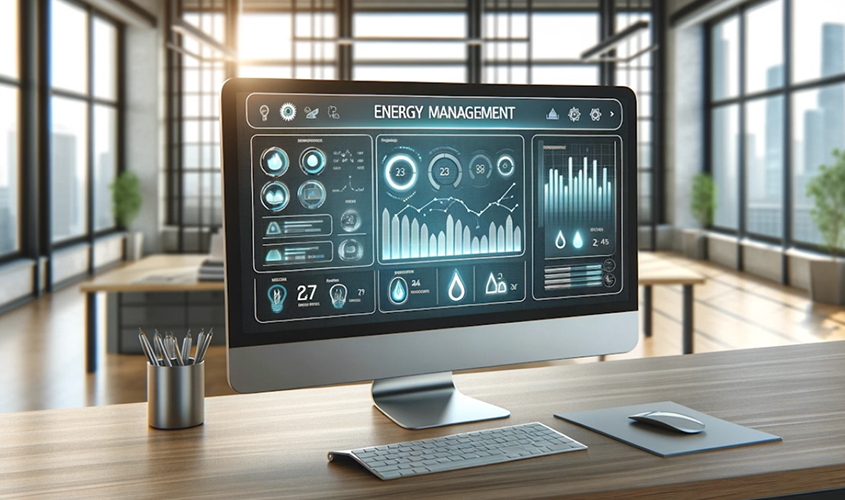
by Vinergy Vietnam | Aug 4, 2024 | Uncategorized
In the realm of modern building management, two systems stand out for their crucial roles: Building Automation Systems (BAS) and Energy Management Systems (EMS). While both contribute significantly to building efficiency and sustainability, they serve distinct purposes and operate in unique ways. Understanding the differences between building automation and energy management systems is essential for facility managers, building owners to optimize their operations. This article delves into the key distinctions between these two systems, exploring their functionalities, objectives, and how they complement each other in creating smarter, more efficient buildings.
What is Building Automation Systems (BAS)?
1. Definition
Building Automation Systems (BAS) are centralized, interlinked networks of hardware and software that monitor and control the environment in commercial, industrial, or institutional facilities. These systems manage various building operations including heating, ventilation, and air conditioning (HVAC), lighting, security, and other systems to ensure optimal performance and efficiency.
The main purpose of BAS is to optimize building performance, ensuring a comfortable working and living environment for users, while simultaneously saving energy and operational costs.

2. Benefits
The implementation of a BAS offers numerous advantages for modern buildings:
- Centralized Control: BAS allows for the simultaneous management of multiple building systems from a single platform, simplifying operations and reducing the need for manual interventions.
- Enhanced Monitoring Capabilities: The system provides real-time data on the performance of various building components, enabling quick identification of issues and proactive maintenance.
- Improved Maintenance Scheduling: With access to detailed performance data, maintenance teams can plan and execute upkeep tasks more effectively, potentially extending the lifespan of equipment.
- Automation of Building Systems: BAS enables the automation of routine tasks and adjustments, reducing the workload on facility management staff and ensuring consistent operation.
- Optimized Comfort Control: Through automated adjustments based on predefined parameters, BAS maintains consistent comfort levels throughout the building, enhancing occupant satisfaction.
- Energy Efficiency: The system can optimize energy usage across various building systems, potentially leading to significant cost savings and reduced environmental impact.
- Increased Safety and Security: BAS can integrate with security systems, allowing for better monitoring and quicker response to potential threats or emergencies.

3. Are a BMS and a BAS the Same Thing?
In short, yes. A Building Management System (BMS) and a Building Automation System (BAS) refer to the same concept, with these terms often used interchangeably in the industry. Both describe a distributed control system that integrates multiple building systems, including HVAC, lighting, security and access control, fire safety systems, and elevators. The primary function of a BMS/BAS is to automate certain controls and settings within these systems, helping to optimize building performance, enhance occupant comfort, and improve overall efficiency.
While some industry professionals might have slight preferences for one term over the other, in practice, they denote the same type of system with identical functionalities and purposes. Understanding this equivalence is crucial when discussing building technologies, especially when comparing them to other systems like Energy Management Systems (EMS).
What are Energy Management Systems (EMS)?
1. Definition
Energy Management Systems (EMS) are sophisticated platforms designed to monitor, analyze, and optimize energy consumption and power distribution within buildings or facilities. These specialized software systems are specifically engineered to measure and manage energy usage across a building’s various systems and operations.
EMS technology collects data from multiple sources, including BMS, system equipment, utility meters, and sensors. This comprehensive data collection allows EMS to provide real-time insights into energy usage patterns, trends, and anomalies.
An EMS’s primary function is to monitor, analyze, and optimize energy consumption across a building’s systems and operations. It allows facility managers and energy specialists to centralize the tracking of energy usage, automate energy-saving strategies, and make data-driven decisions to reduce overall energy costs and improve sustainability.

2. Benefits
EMS brings to the table a range of advantages that include:
- Comprehensive Energy Tracking: EMS allows for detailed monitoring and analysis of energy consumption across all building systems, providing a holistic view of energy usage patterns.
- Real-time Data Insights: The system offers immediate access to energy consumption data, enabling quick identification of inefficiencies and anomalies for prompt action.
- Energy Savings Planning: With rich data on energy usage, managers can develop effective energy-saving strategies and measure their impact.
- Energy Consumption Optimization: EMS automatically adjusts energy usage based on actual demand, reducing waste and maximizing efficiency.
- Automated Energy Management: EMS can automatically implement energy-saving strategies based on predefined rules, reducing the workload on facility management staff.
- Improved Environmental Performance: Through reduced energy consumption, EMS significantly decreases the building’s carbon emissions, enhancing sustainability.
- Substantial Cost Savings: The system optimizes energy usage, resulting in lower utility bills and increased profits for building owners.
- Integration with Other Systems: EMS can integrate with other building management systems, allowing for a more holistic approach to building efficiency and performance.
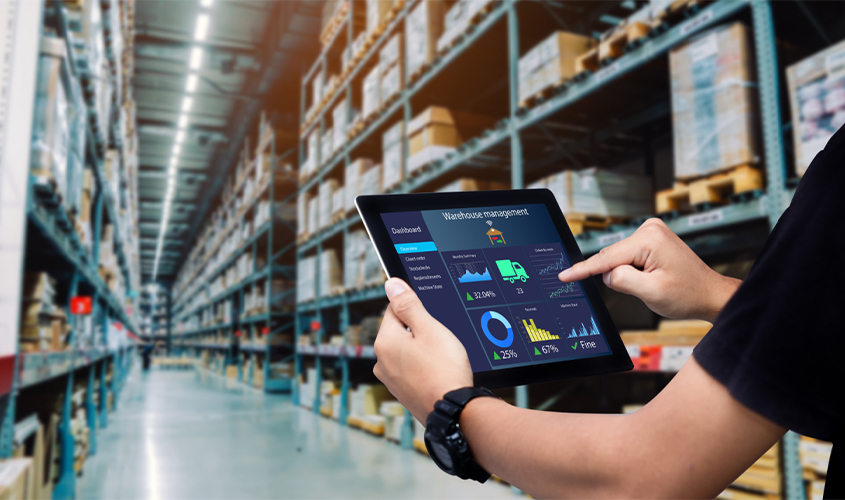
Differences and similarities between Building Automation and Energy Management Systems
1. Similarities
Both systems aim to enhance building performance and efficiency, albeit with different primary focuses. Key similarities include:
- Data Collection: Both BAS and EMS gather and process data from various building systems and sensors, providing valuable insights into building operations.
- Real-time Monitoring: These systems offer real-time monitoring capabilities, allowing facility managers to track building performance and identify issues promptly.
- Automation: Both systems incorporate automation features to optimize building operations without constant manual intervention.
- Sustainability Benefits: Implementation of either system can result in significant energy savings and a reduced environmental impact.
2. Differences between Building Automation and Energy Management Systems
| Aspect |
Building Automation Systems (BAS) |
Energy Management Systems (EMS) |
| Main Function |
Control, Automation (DO, ACT) |
Monitoring, Analysis (PLAN, CHECK) |
| Primary Focus |
Overall building operations and comfort |
Energy consumption and optimization |
| Scope |
Controls multiple building systems (HVAC, lighting, plumbing, security, etc.) |
Primarily focuses on energy-consuming systems |
| Main Purpose |
Keep occupants comfortable and streamline daily operations jobs of engineers and building operators |
Provide visibility and deep insights into energy use, analyze energy consumption patterns to forecast future needs, uncover savings opportunities, and mitigate cost-increase risks. |
| Optimization |
Focuses on equipment efficiency |
Emphasizes overall energy use patterns and strategies |
| Installation |
Often requires cost-intensive retrofits and equipment installations |
Can be standalone or integrated with BAS without invasive installations |
| Cost Implications |
Higher upfront costs for equipment and installation |
Lower implementation costs, focuses on optimization |
| Adaptability |
Less adaptable, focused on preset controls |
More adaptable, can adjust based on analytical insights |
| Impact on Operations |
Automates control but may not provide guidance on optimal operational strategies |
Transforms energy optimization metrics into simple, actionable initiatives |
BAS vs. EMS: Do Buildings Need Both?
As building energy management continues to grow in significance, business owners often find themselves pondering a crucial question: Does my building need both a Building Automation System (BAS) and an Energy Management System (EMS)?
A BAS focuses on centralized management and control of building systems, while an EMS specializes in optimizing energy efficiency. At first glance, these might seem like overlapping functions, but in reality, they complement each other beautifully.
But does every building need both systems? The answer depends on your specific goals and requirements. For instance, if your building is located in a city with carbon drawdown laws, like Ha Noi or Ho Chi Minh City, the combined capabilities of BAS and EMS could be invaluable in meeting stringent energy efficiency targets.
The integration of BAS and EMS, along with other technological aids, creates a powerful toolkit for reducing energy consumption and environmental impact. This approach allows building managers to gain deeper insights into building performance, implement more effective energy-saving strategies, respond quickly to changing conditions, and achieve higher levels of sustainability and operational efficiency.
While not every building may require both systems, their combination offers a comprehensive solution for those seeking to maximize energy efficiency and meet ambitious environmental goals. In an increasingly eco-conscious world, the question might not be whether you need both systems, but rather, can you afford not to have them?
Ultimately, the decision to implement both BAS and EMS should align with your building’s specific needs, environmental commitments, and long-term efficiency goals. As we continue to prioritize sustainable building practices, the integration of these systems may become not just a luxury, but a necessity for forward-thinking business owners and managers.
At Vinergy, we don’t just provide solutions; we partner with our customers throughout the implementation and operation process, ensuring optimal efficiency for each project. To learn more about how Vinergy can help your building achieve optimal energy efficiency through the integration of BMS and EMS, don’t hesitate to get in touch with us!

by Vinergy Vietnam | Jul 13, 2024 | Uncategorized
Biomass is one of the oldest sources of energy. However, significant ambiguity and misunderstanding surround the question of whether biomass is a renewable or non-renewable energy source. Can biomass truly be considered a renewable option for meeting our energy needs? Does it qualify as an efficient source of energy? Let’s explore this through the following article!
What is Biomass?
Biomass refers to organic matter derived from plants and animals that can be utilised as a fuel source. When combusted, biomass can generate heat for warming water, residential heating, and various other applications. In many developing nations, biomass remains a crucial energy resource. It is available in diverse forms, including:
- Wood and agricultural residues (such as crop waste, forestry byproducts).
- Organic components of municipal solid waste.
- Animal and human waste streams (manure, sewage sludge).
- Other industrial process wastes like sawmill residues and black liquor.
Biomass is considered an alternative energy source since it does not come from fossil fuels, offering a sustainable solution for meeting energy needs while mitigating greenhouse gas emissions. Furthermore, there are three main types of biomass: residual (such as agricultural and forestry residues), natural (like wood), and generated (like sewage and urban organic waste).
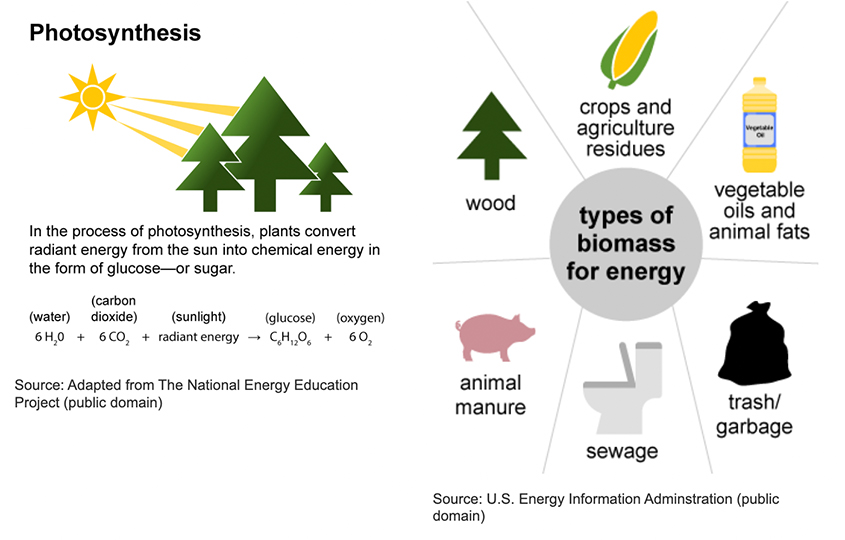
How is biomass energy generated?
Various processes can transform biomass into usable energy forms, including:
- Direct combustion: Direct combustion stands as the predominant approach in harnessing energy from biomass. It involves burning biomass directly to heat buildings and water, to supply industrial process heat, and to produce electricity through steam turbines.
- Thermochemical conversion: High-temperature treatment without oxygen produces synthesis gas or bio-oils. These can become biofuels or chemicals.
- Chemical conversion: Employing chemical treatments and processes like transesterification to convert plant-based oils and fats into biodiesel.
- Biological conversion: Using enzymes and microorganisms to break down biomass into gaseous or liquid biofuels like biogas (from anaerobic digestion of animal waste or sewage sludge) and ethanol (from fermentation of plant-derived sugars).
These diverse conversion methods enable the utilisation of a wide range of biomass feedstocks, making biomass a versatile and renewable source of energy that can supplement or replace conventional fossil fuels in various applications. Moreover, scientists and researchers are actively exploring ways to enhance existing biomass conversion methodologies and develop novel techniques to harness a greater portion of available biomass resources for energy production.
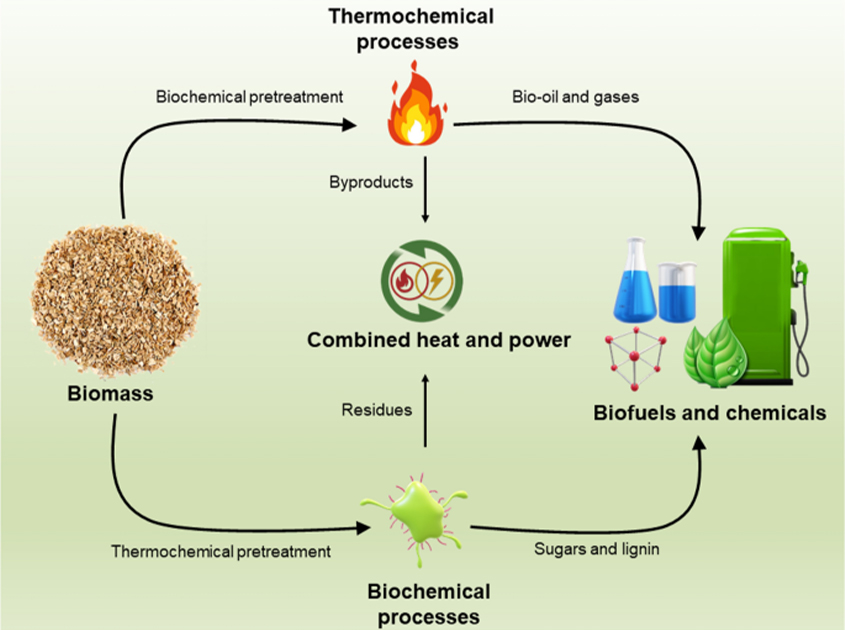
Advantages of Biomass energy
Biomass energy boasts various benefits compared to fossil fuels, with its most prominent advantage being its role in mitigating carbon emissions in the atmosphere. This mitigation is achieved through a closed carbon cycle, where the carbon dioxide released during biomass combustion is recaptured by growing plants, unlike fossil fuels which release long-sequestered carbon. The thermal processing of biomass for energy generation further reduces net carbon emissions compared to fossil fuel processing. Due to its renewable nature and the potential for carbon-neutral or even carbon-negative outcomes when combined with advanced technologies like carbon capture and storage.
Consequently, the utilisation of biomass presents numerous advantages that render it an appealing choice for energy generation and reducing the carbon footprint across various sectors:
- Companies utilize urban and industrial waste biomass, typically sourced locally, thereby closing the loop without requiring transportation and fostering the circular economy.
- Biomass derived from pruning and forest maintenance waste is utilised, thereby mitigating the risk of forest fires.
- It creates long-term, local job prospects in the green energy sector, reducing carbon emissions associated with long-distance commuting and fostering sustainable community development.
- In contrast to fossil fuels, biofuels derived from biomass offer a lower-carbon alternative for transportation, particularly in hard-to-decarbonize sectors like aviation.
- It lessens reliance on fossil fuels in industrial processes, providing a renewable alternative that can significantly reduce carbon emissions in manufacturing and production.
- In regions heavily dependent on imported fossil fuels, biomass serves as a vital asset in reducing the carbon footprint associated with fuel transportation and geopolitical energy dependencies.
- The utilisation of biomass encourages efficient land use and conservation practices, promoting carbon sequestration through responsible agricultural and forestry management.
- By using agricultural residues for energy production, the carbon footprint of farming is reduced, while also providing farmers with an additional income stream from waste products.
- It serves as a vital asset in tackling energy poverty in areas where spending on fossil fuels constitutes a substantial portion of their Gross Domestic Product (GDP).
- Modern biomass technologies offer higher energy efficiency than some fossil fuel processes. This further reduces energy production’s carbon footprint.
- The use of biomass can be integrated with carbon capture and storage technologies, potentially creating negative emissions scenarios that actively remove carbon dioxide from the atmosphere.

Is biomass energy renewable or nonrenewable?
Biomass is regarded as a renewable energy source due to the fact that its inherent energy originates from the sun, and it possesses the ability to regenerate within a relatively short period. This characteristic implies that biomass can be utilised continuously without risking depletion or exhaustion of the resource. Additionally, it can be replenished at a relatively rapid pace, thereby avoiding the irreversible diminishment of the Earth’s natural reserves.
The formation of fossil fuels requires several thousand or even millions of years. However, the growth cycle of a tree spans only 30 years, corn stalks are produced annually, and animal manure is generated daily. Given the abundance and ease of replenishment of biomass materials, they are classified as renewable energy sources.
Current applications and potential of Biomass
According to data, biomass contributed approximately 4.7% of the total primary energy consumption in the United States during the year 2020. The utilisation of biomass was distributed across various sectors, with the following breakdown:
- 50% Industrial
- 28% Transportation
- 10% Residential
- 9% Electric power
- 3% Commercial
The United Kingdom is home to numerous biomass power facilities that play a crucial role in diversifying the country’s renewable energy portfolio. As of 2023, there were 78 operational power plants in the UK that utilised biomass resources to produce electricity. Collectively, these installations had an estimated power generation capacity of 4,158 megawatts, sufficient to meet the hourly electricity needs of approximately 8.3 million residential households.
Another instance of biomass utilisation originates from the Beijing Dequingyuan chicken farm, where three million chickens yield 220 tons of manure daily. Employing gasification technology, the farm transforms this manure into 14,600 megawatt-hours of electricity annually.
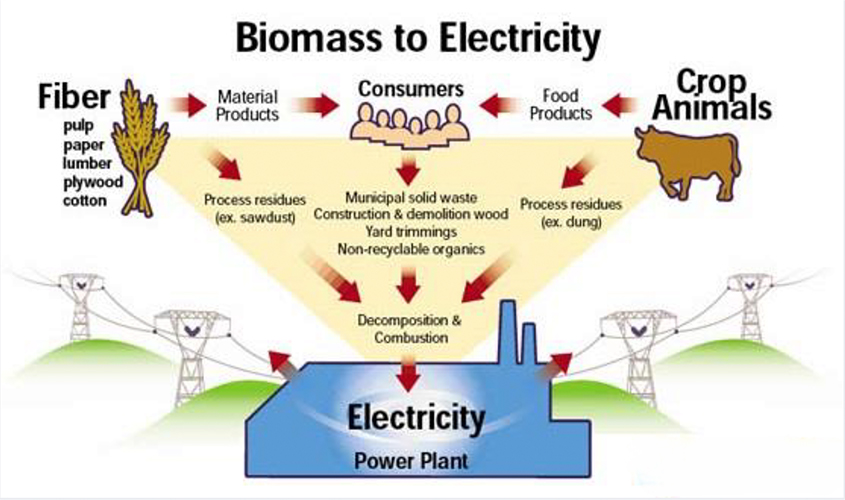
How safe is biomass energy?
Biomass energy is regarded as a secure energy source. Nevertheless, it doesn’t imply that biomass energy doesn’t possess certain drawbacks, particularly when considering its environmental cleanliness.
Pollutants pose a significant potential concern. The combustion of biomass emits pollutants and particulate matter into the atmosphere, including greenhouse gases that are notorious for their contribution to global warming. However, the Environmental Protection Agency (EPA) within the United States has implemented regulations aimed at mitigating the potential adverse effects of biomass energy generation on the environment.
Other drawbacks of biomass do not necessarily compromise the safety of biomass energy. While there are several additional aspects to consider, the advantages of biomass far surpass both its drawbacks and those of continued fossil fuel combustion.
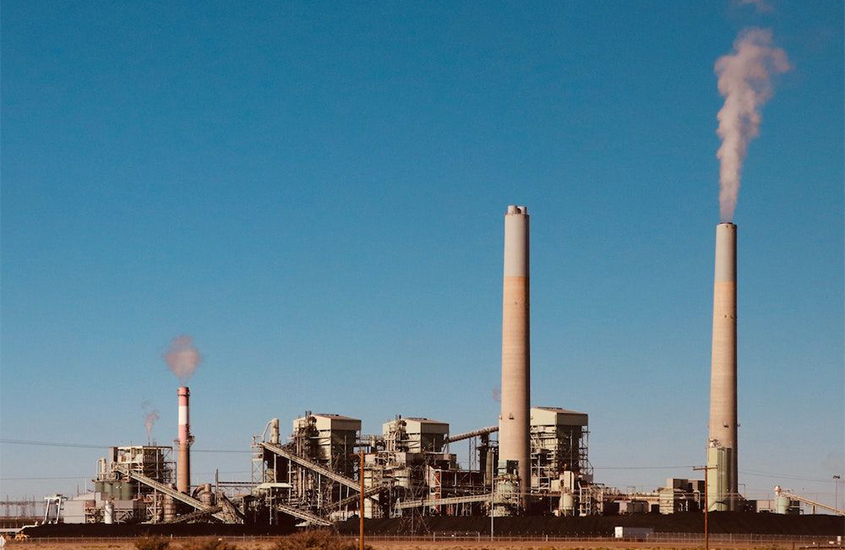
Is Energy from Biomass Efficient?
Biomass presents a renewable energy alternative that can readily substitute for conventionally utilised fossil fuels, simultaneously providing numerous beneficial environmental impacts. The efficiency of converting biomass into usable forms such as electricity, thermal energy, transportation fuels, and chemical products heavily relies on the specific conversion processes employed.
Nevertheless, similar to any other energy source, efficiency can be further optimised by utilising appropriate technological tools. By implementing the right energy management software, you can monitor, analyse, and control the usage of biofuel along with other energy sources such as electricity, gas and thermal. If the software identifies excessive biomass consumption, you possess the capability to modify the consumption rate or upgrade to a more efficient boiler system, thereby optimising biomass usage.
So how can we enhance the effectiveness of contemporary installations?
Vinergy‘s intelligent solution empowers you to optimise your installation’s efficiency with its data-driven insights, allowing you to make the necessary adjustments for peak performance.
























